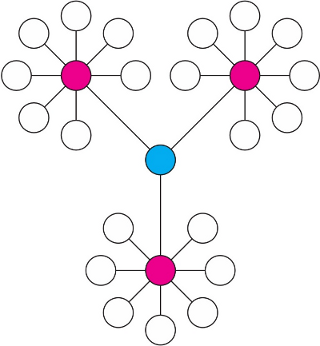In a graph network, the degree of a node is the number of connections it has to other nodes , Degree centrality is defined as the number of links occurred upon a node. Nodes with higher node degree act as hubs in a network. For directed graph, there are two types of degree: in-degree for links come from other nodes, and out-degree for links initiated from the current node. Metabolic network is directed graph. Here we only consider the out-degree for node importance measure. It is assumed that nodes in upstream will have regulatory roles for the downstream nodes, not vice versa. In the illustration below, the nodes colored in red have high degree centrality.

In a graph network, the betweenness centrality measures number of shortest paths going through the node. Therefore, it take into consideration of global network structure, not only immediate neighbour of the current node. For example, nodes that occur between two dense clusters will have a high betweenness centrality, even its degree centrality is not high. Since metabolic network is directed, we use relative betweenness centrality for metabolite importance measure. In the illustration on the right, the nodes colored in blue have high betweenness centrality.